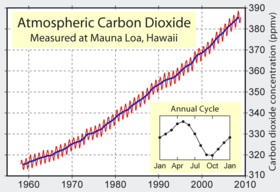In several countries with common carrier arrangements, electricity retailing arrangements make it possible for consumers to purchase green electricity (renewable electricity) from either their utility or a green power provider.
When energy is purchased from the electricity network, the power reaching the consumer will not necessarily be generated from green energy sources. The local utility company, electric company, or state power pool buys their electricity from electricity producers who may be generating from fossil fuel, nuclear or renewable energy sources. In many countries green energy currently provides a very small amount of electricity, generally contributing less than 2 to 5% to the overall pool. In some U.S. states, local governments have formed regional power purchasing pools using Community Choice Aggregation and Solar Bonds to achieve a 51% renewable mix or higher, such as in the City of San Francisco.
By participating in a green energy program a consumer may be having an effect on the energy sources used and ultimately might be helping to promote and expand the use of green energy. They are also making a statement to policy makers that they are willing to pay a price premium to support renewable energy. Green energy consumers either obligate the utility companies to increase the amount of green energy that they purchase from the pool (so decreasing the amount of non-green energy they purchase), or directly fund the green energy through a green power provider. If insufficient green energy sources are available, the utility must develop new ones or contract with a third party energy supplier to provide green energy, causing more to be built. However, there is no way the consumer can check whether or not the electricity bought is "green" or otherwise.
In some countries such as the Netherlands, electricity companies guarantee to buy an equal amount of 'green power' as is being used by their green power customers. The Dutch government exempts green power from pollution taxes, which means green power is hardly any more expensive than other power.
In the United States, one of the main problems with purchasing green energy through the electrical grid is the current centralized infrastructure that supplies the consumer’s electricity. This infrastructure has lead to increasingly frequent brown outs and black outs, high CO2 emissions, higher energy costs, and power quality issues . An additional $450 billion will be invested to expand this fledgling system over the next 20 years in order to meet increasing demand . In addition, this centralized system is now being further overtaxed with the incorporation of renewable energies such as wind, solar, and geothermal energies. Renewable resources, due to the amount of space they require, are often located in remote areas where there is a lower energy demand. The current infrastructure would make transporting this energy to high demand areas, such as urban centers, highly inefficient and in some cases impossible. In addition, despite the amount of renewable energy produced or the economic viability of such technologies only about 20 percent will be able to be incorporated into the grid. In order to have a more sustainable energy profile, the United States has to move towards implementing changes to the electrical grid that will accommodate a mixed-fuel economy.
However, several initiatives are being proposed to mitigate these distribution problems. First and foremost, the most effective way to reduce our nation’s CO2 emissions and slow global warming is through conservation efforts. Opponents of our current electrical grid have also advocated for decentralizing the grid. This system would increase efficiency by reducing the amount of energy lost in transmission. It would also be economically viable as it would reduce the amount of power lines that will need to be constructed in the future to keep up with demand. Merging heat and power in this system would create added benefits and help to increase its efficiency by up to 80-90%. This is a significant increase from the current fossil fuel plants which only have an efficiency of 34% .
A more recent concept for improving our electrical grid is to beam microwaves from Earth-orbiting satellites or the moon to directly when and where there is demand. The power would be generated from solar energy captured on the lunar surface In this system, the receivers would be “broad, translucent tent-like structures that would receive microwaves and convert them to electricity”. NASA said in 2000 that the technology was worth pursuing but it is still too soon to say if the technology will be cost-effective.
Abuses
In countries where suppliers are legally obliged to purchase a proportion of their electricity from renewable sources (for example under the Renewables Obligation in the United Kingdom), there is a danger that energy suppliers may sell such green electricity under a premium "green energy" tariff, rather than sourcing additional green electricity supplies. Where a Renewable Energy Certificate or similar scheme is in operation it is also possible for the energy supplier to sell the green electricity to the consumer, and also sell the certificate to another supplier who has failed to meet their quota, rather than "retiring" the certificate from the marketplace. In other cases green energy tariffs may involve carbon offsetting rather than purchasing or investing in renewable energy.
Certification schemes to minimise these and similar questionable practices are in place or are being developed in a few countries.
International standards
The World Wide Fund for Nature and several green electricity labelling organizations have created the Eugene Green Energy Standard under which the national green electricity certification schemes can be accredited to ensure that the purchase of green energy leads to the provision of additional new green energy resources.
From Wikipedia, the free encyclopedia
Read More...
















